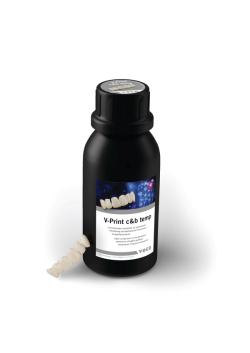- About Us
- Advertise
- Editorial
- Contact Us
- Terms and Conditions
- Privacy Policy
- Do Not Sell My Personal Information
© 2025 MJH Life Sciences™ and Dental Products Report. All rights reserved.
6 ways bulk fills are changing restorative dentistry
Find out why bulk fill composites are game changers for clinicians.
For more than a century, amalgam was the go-to for fillings. It was easy to place and long-lasting. However, amalgam’s downside was esthetics. Composite resins solved the esthetics problem, but they presented their own issues, especially when large voids had to be filled.
Read more: The evolution of dental materials
In recent years, bulk fill composite resins have solved those problems, providing a number of benefits to the clinician.
Click through the slides to learn six ways bulk fills are changing restorative dentistry.
Time savings
Conventional composites require several layers to fill a deep void – and the time required for each layer can add up. Bulk fills cut that time dramatically.
“The overall time a dentist normally takes in treatment of posterior restorations is around 30-60 minutes, considering the complexity of the composites,” says Dr. Khaleel Mohammed, senior manager, clinical affairs at Dentsply Sirona. “During this procedure, you’re actually increasing the patient inconvenience and discomfort by increasing chairside time. Bulk fills, and especially SDR flow+ (Smart Dentin Replacement) from Dentsply Sirona, on the other hand, dramatically reduce chairside time, as SDR flow+ can be cured up to 4 mm, and the final occlusal layer is capped with any methacrylate-based composite. So, basically, you are reducing the overall curing time and the patient inconvenience.”
Saving time is, of course, important to the patient. But the practice also benefits because more patients can be seen and productivity goals can be achieved.
“That is very important, considering the emergence of DSOs,” says Dr. Gaurav Joshi, product marketing manager, GI cements and restoratives at GC America. “They are inclined toward productivity and efficiency. With bulk fills, the time savings and efficiency are provided. In that respect, bulk fills are important.”
“With SDR flow+, a general dentist is able to reduce 40 percent of chairside time during a posterior restorative procedure,” Dr. Khaleel adds. “And by this, the dentist can easily increase their patient influx when SDR flow+ is incorporated into their posterior restoration procedures. You’re basically not just adding revenue to the dental practice and reducing chairside time but also increasing the longevity of these posterior restorations you most commonly perform every day.”
Ease of placement
Bulk fills were first introduced in the mid-1990s as a way to quickly fill large voids without requiring multiple layers. However, the initial products were not ideal. Gregor Connell, North American director of clinical education for VOCO America, says that those initial products had problems with overall performance – they were hard to pack and tended to chip. It wasn’t until 2010 that the modern generation of bulk fills came to market.
New formulations are flowable, meaning they have the right consistency to be squirted into a void, eliminating the need for incremental layering and lessening the chance of air bubbles.
“If you’ve got a big Class I prep, the idea was to fill 75 percent of that thing with this flowable material and then cap it off with something packable that was really resistant and shade stable and matched,” Connell says. “Instead of curing three different increments, you would just fill this thing up, zap it with a light and then put something pretty on top.”
More from the author: Top 10 worst states to be a dentist
That flowability gives clinicians the precision and accuracy that they need.
“Anything that is flowable will flow into nooks and crannies,” Connell says. “Little undulations or surface imperfections on the pulpal floor, it would adapt to it very easily. Whereas if you pack a material, you have to be really good at making the material adapt to the contours of the prep. And failure to adapt might introduce air bubbles or air voids underneath, and that creates issues for patients with long-term with sensitivity.”
Dr. Khaleel adds, “When you’re talking about bulk fills, you’re talking about a deep cavity and complex procedures. There are three major challenges that a dentist normally faces when it comes to treating deep posterior cavities: choice of material, complexity of procedure and chairside time. SDR flow+ helps overcome all of these; with its 4mm bulk fill feature and self-leveling ability, it efficiently adapts and flows into and around the cavity nooks and crannies and eliminates the risk of voids or gaps between the restoration and the cavity walls that could eventually lead to secondary caries and postoperative sensitivity, concurrently reducing the chairside time.
“In addition, shrinkage stress is one of the most common factor that leads to secondary caries and postoperative sensitivity,” he continues. “SDR flow+ overcomes this with its ‘patent stress decreasing resin’ that reduces shrinkage stress considerably, thereby increasing the longevity of the posterior restorations.
Curing considerations
With any type of composite, curing is especially important. There are two ways to cure composites: light curing (using a special high-intensity light) or dual curing (using both the light and a chemical reaction within the composite, itself).
“You can light cure it, or if you leave it alone long enough, it will just set on its own with no outside intervention,” says Dr. John Flucke, DDS, Technology Editor for Dental Products Report. “On the dual cures, the light isn’t as critical. It’s going to set no matter what because of a chemical reaction. But on the light cure composite, the light is critically important. People need to make sure that they have the brightest, strongest light available.”
While manufacturers recommend a certain power output, Dr. Flucke advises even more strength.
“Most manufacturers will tell doctors they need 800 mW per square centimeter from their curing light,” he says. “I, personally, think the minimum should be at least 1,000 mW per square centimeter. And if doctors don’t know how bright their lights are, if they don’t have a way of gauging that, they really need to get a meter and be able to check it. Because one of the problems with composites, in general, is that there is no way to know if your curing light is effective if you’re not testing it. You can have the best material in the world, but if you can’t set it, it’s going to cause problems.”
How a composite cures will likely depend on how large and deep the restoration must fill. That is, the deeper the void, the less chance for light to penetrate all the way through. Ultimately, Dr. Flucke says, there is an element of faith in the manufacturer’s claims.
“You have to rely on the manufacturer’s information,” Dr. Flucke says. “When the manufacturer says that the product will set to a depth of 5.1 mm, that’s one of those things where when you do the restoration, how do I really know that it sets to 5.1 mm? I’m not going to do the filling in the patient, extract the tooth, and then do a cross-section and see where it sets. You have to have some faith in what they say.”
Dual curing is helpful – and necessary – with particularly deep restorations.
“They go in like a goo, and then you hit them with a light,” Dr. Flucke explains. “That causes the top layer to set, and then you can adjust the bite and polish it and then know that no matter how deep that preparation is, the chemical part of it will harden.”
Enhanced esthetics
Bulk fill composites resolve the biggest problem of amalgam fillings – they retain more of the teeth’s natural look. While early generations of bulk fills were not perfect, the products continue to improve.
“They do not require a capping layer anymore,” Dr. Joshi says. “The translucency of the new bulk fill materials has been improving and that really makes life easier. The earlier generations of bulk fills were not so good in esthetics and you needed a capping layer of sculptable composite. But the new generation of bulk fills do not need that.”
Related reading: Choosing the right composite for your patients
Translucency is especially important when light curing bulk fills. Most times, posteriorly placed composites must have a certain level of translucency for curing lights to be effective. Most patients don’t find slight imperfections with the composite color match to be objectionable, but that is not always the case and a capping layer might still be desired.
“Some people really want it to look good – they really want their back teeth to look beautiful,” Dr. Joshi says. “Sometimes, the patient has a broad smile. In that case, you might want especially esthetic restorations in the back teeth.
While bulk fill composites achieve a good level of esthetics, they are still improving.
“As time goes on, and manufacturers continue to do research, they are getting better and better,” Dr. Flucke says. “A part of it is that the light-cured materials have a tendency to be a little bit more translucent. And the reason for that is that helps the light actually get through the material. If it’s translucent, the light can penetrate it better. Translucency can be a good thing if you have really translucent teeth, but that’s not always the case. But as the newer generations of bulk fills come out, they are getting better.”
Technique
Composites can be finicky. They don’t like water, and if they’re exposed, the restoration can be ruined. Bulk fills can ameliorate that problem by allowing doctors to quickly place restorations on even the most challenging patients.
“Some patients just naturally create a lot of saliva,” Dr. Flucke says. “Or some patients can’t stay open very long. They have to close because they have jaw problems, or whatever. Saliva can also contaminate the situation. You can be doing the best composite in the world, but if it’s covered with saliva, that composite isn’t going to work. So, what I tend to do on patients that have that limited opening, or people who have a very high salivary flow, those are the times when I reach for a bulk fill because I can work faster and not worry as much about contamination.”
More from the author: 4 big benefits of resin cements
Bulk fills make the restorations easier, but they still require the doctor’s knowledge and skill.
“You’ve got to do all the right things when you’re the doctor,” Dr. Flucke says. “But if you can eliminate the saliva aspect of it, for people who can’t stay open or have a really high salivary flow, those are the times when you want to use the bulk fill. If the area becomes contaminated with saliva, the filling is just not going to work. It’s going to break down; it just doesn’t bond to the tooth properly. By being able to work faster, you just decrease the incidence of that kind of contamination.”
Innovation
When bulk fills were first introduced, they had problems. But those problems were largely corrected in subsequent generations. And as time goes on, manufacturers continue to improve bulk fills through new formulations and technologies.
VOCO’s Admira Fusion x-tra is formulated without BPAs – an attractive feature for those patients who want to avoid that chemical.
Trending article: Are dentists contributing to antibiotic overuse?
“Admira Fusion x-tra is a biologically inert, or neutral, product,” Connell explains. “It is the only product in the world that is made 100 percent in an all-ceramic structure. There is no conventional resin used to hold the glass together. Those conventional resins use a biological mass called Bisphenol A (BPA). We were able to formulate a product that is based purely on all-silicate technology with no traditional resin monomers. Ten years ago, this would’ve been, ‘Oh yeah, that’s nice. How much is it?’ Today, I deal with phone calls from patients that have found this product and they are saying, ‘Where is a dentist that uses this?’ Because they have researched it and they’re concerned about BPA. There is a rapidly growing population of patients that are educated and they understand what this is doing to them. The physical material is much more closely aligned to the tooth structure than its predecessor in many of the current competitors.”
GC America’s EQUIA Forte is unlike conventional bulk fill composites in that it’s based on glass ionomer.
“Most people think of composite resins when they consider bulk fill materials,” Dr. Joshi says. “But advances in glass ionomer also makes it possible to use in stress-bearing situations. EQUIA Forte provides all the advantages of glass ionomer. Being a glass ionomer, it does not require light curing, it provides unlimited depth of cure and also fluoride release, so it is a great option for pediatric applications.
“The advantage of these materials is that they can be used in a wet environment,” Dr. Joshi adds. “Composite restorations require isolation and they’re very technique sensitive, but glass ionomers are hydrophilic, so they can be used in the presence of saliva. So that is why they make a great option for old patients or very young patients where it would be very hard to isolate the tooth or it would be very hard to keep a dry environment.”
Bulk fill composites are game changers for clinicians: they are reasonably quick placing, durable and provide a level of esthetics that conventional amalgam fillings simply don’t offer.



